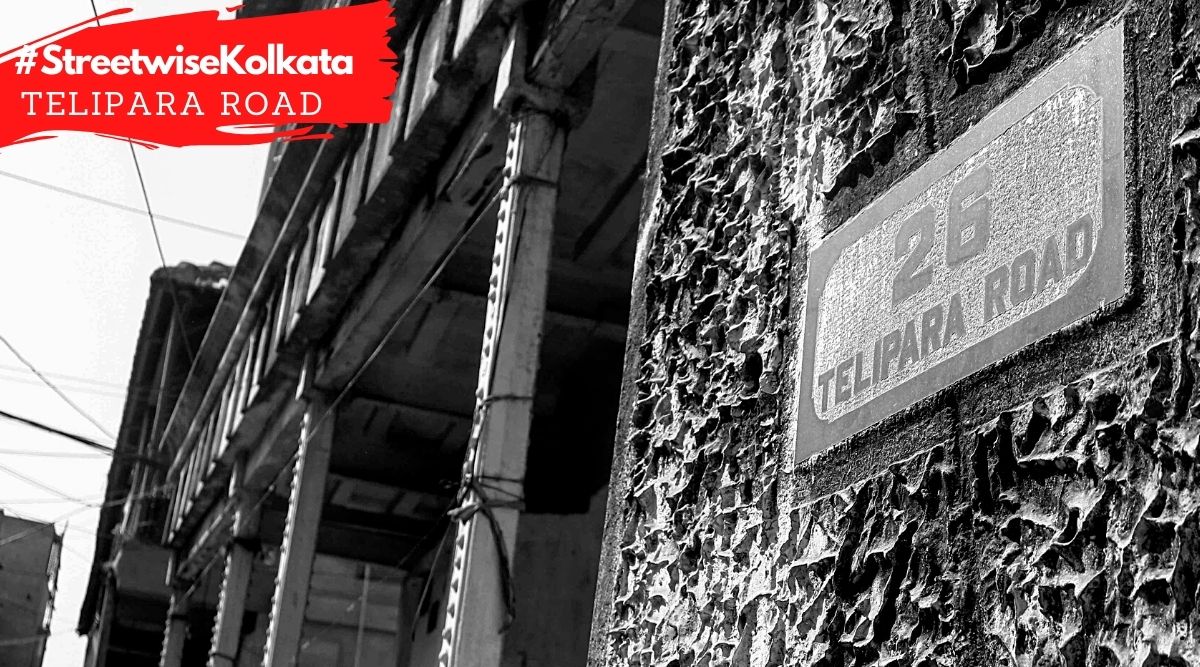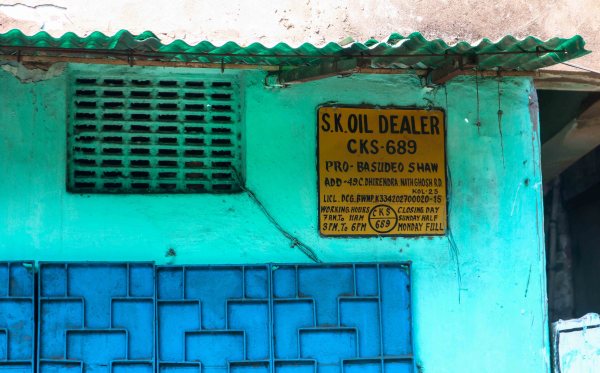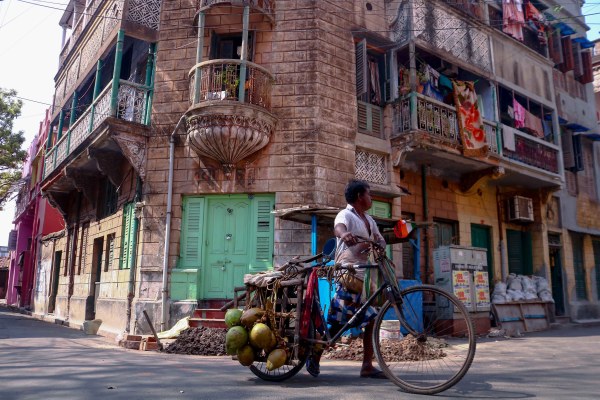 Even today, addresses on that road carry two variations of the road’s spelling: Telipara or Teliapara.
Even today, addresses on that road carry two variations of the road’s spelling: Telipara or Teliapara. A stone’s throw from the overwhelming bustle of Jadubabu Bazaar in south Kolkata’s Bhawanipore neighbourhood, is a narrow, unassuming little lane. As there are no markers for the beginning and the end of the old marketplace, you are most likely to miss the entire Teliapara Road if you are walking down without looking up at street signs.
In his book ‘A History of Calcutta’s Streets’, historian P Thankappan Nair writes that this short lane was where the telis (the oil-pressers) and the kaluas (the “oil-mongers”) of old Calcutta had set up their homes and shops until modern methods of mass-produced, mill-made oils became the preference for the city’s residents. These oil-pressers would sell everything, from freshly pressed coconut oil to mustard oil, an essential ingredient in Bengali cooking, to other less common oils in between.
It is not clear when the road and the neighbourhood came to be associated with the telis of Calcutta. An entry in the September edition of the Calcutta Gazette of 1937 indicates that the Calcutta Municipal Corporation had proposed a change in the spelling of the road from Teliapara to Tilipara but that never came to fruition. Even today, addresses on that road carry two variations of the road’s spelling: Telipara or Teliapara.
The teli community, writes K S Singh, in his book ‘India’s Communities’ for the Anthropological Survey of India, “derives its name from the Sanskrit word talika or taila, used for the oil extracted from sesame and mustard, thus alluding to their traditional occupation”.
The teli community found their jobs diminishing after the pressing and extracting of oil largely switched to mechanical production methods, forcing members of the community to turn to other avenues of income, like farming and animal husbandry.
 An oil shop on Teliapara road. (Express Photo by Shashi Ghosh)
An oil shop on Teliapara road. (Express Photo by Shashi Ghosh)
The 1837 edition of the Calcutta Review carries an interesting entry about the community. A chapter dedicated to the ‘Territorial Aristocracy of Bengal’ indicates that the Brahmins had relegated the community as one belonging to lower castes.
“The Pandits thus referred to unanimously gave the verdict in his favour, a verdict founded on the dictum tula danda dhari taulik; ie, Telis are not common oil-men, but derive their appellation from the fact of their holding the scales for the weighment of goods, and that the word Teli is the corruption of the word Taulik,” says the entry.
 An old building in Bhawanipore. (Express Photo by Shashi Ghosh)
An old building in Bhawanipore. (Express Photo by Shashi Ghosh)
It further mentions: “As holding the scales and weighing the goods is a vocation common to all merchants and mahajans, the Telis came in the same category with other Navasaks or second class Sudras, and like them, were entitled to the privilege of making gifts.” According to Singh’s writings, because a small number in the community, spread across the country, are landless, many have applied to be recognised as ‘Other Backward Castes’.
Today, not many oil-pressers remain in Teliapara. The road now houses a mix of residential properties and commercial establishments and it is impossible to discern where the next-door Jadubabu Bazaar ends and where Teliapara begins given that hawkers and pedestrians have taken over the pavements.
Bound by the bazaar on one end and Turf Road on the other, the manic pulling down of the city’s crumbling architectural heritage appears to have largely evaded the old buildings in and around this road. Some exceptions, however, remain.
One would be hard-pressed to find hand-pressed oil in the city today. But Calcutta is a city where one comes in search of history and usually does end up finding what they’re looking for, only perhaps not in the expected form. In this case, remnants of the teli community can still be found in this lane, in the odd shops with yellow hand-painted signboards saying “oil-dealer”. Of course, these shop owners do not know that the road acknowledges Calcutta’s teli community’s work.
 Continue with Facebook
Continue with Facebook Continue with Google
Continue with Google